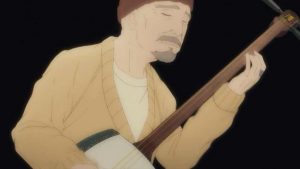 The one question that keeps going through my mind with this series is “why?” Why is a series capable of such highs equally capable of shooting itself in the foot? Why do certain characters have to intrude on what could be a truly captivating story (and often is) with their awfulness? And most immediately, “why didn’t you just end the episode when the credits started rolling?” As I said last time, I can tell Mashiro no Oto is going to be one of those shows that just drives me nuts.
The one question that keeps going through my mind with this series is “why?” Why is a series capable of such highs equally capable of shooting itself in the foot? Why do certain characters have to intrude on what could be a truly captivating story (and often is) with their awfulness? And most immediately, “why didn’t you just end the episode when the credits started rolling?” As I said last time, I can tell Mashiro no Oto is going to be one of those shows that just drives me nuts.
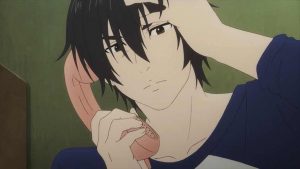 That said, I’m covering it. This episode clinched it for me despite my reservations, because any series that can do what this one does is too valuable a commodity to ignore. It isn’t simply a matter of hiring the right musicians and letting them do their thing, though that’s certainly crucial. It’s making the music as front and center as it is in the narrative. It’s animating the shamisen playing with an almost unbelievable level of realism given the seeming budget for the series. And most surprisingly given how irritating it can be, it’s the way the writing intrinsically understands the role music plays in our lives (especially memory). That shit don’t just grow on trees.
That said, I’m covering it. This episode clinched it for me despite my reservations, because any series that can do what this one does is too valuable a commodity to ignore. It isn’t simply a matter of hiring the right musicians and letting them do their thing, though that’s certainly crucial. It’s making the music as front and center as it is in the narrative. It’s animating the shamisen playing with an almost unbelievable level of realism given the seeming budget for the series. And most surprisingly given how irritating it can be, it’s the way the writing intrinsically understands the role music plays in our lives (especially memory). That shit don’t just grow on trees.
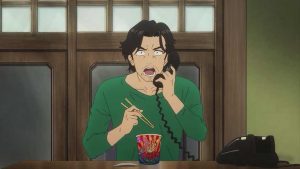 The struggle of Setsu to find a way to make “Shungyou” his own is as universal as anything could be, given that it’s something only a gifted artist could truly understand. And Kamiki-san is most certainly that – and he’s easily seen through Setsu’s intentionally clumsy dressing room performance to the true talent underneath. When he talks of bringing the boy out of his shell, one senses that this is something he intends to take a part in – a natural instinct, perhaps, of a musical genius to cultivate the genius he sees in others. Perhaps, too, there’s a sense of responsibility towards Setsu’s grandfather, who the entire shamisen community seems to revere as a near-God.
The struggle of Setsu to find a way to make “Shungyou” his own is as universal as anything could be, given that it’s something only a gifted artist could truly understand. And Kamiki-san is most certainly that – and he’s easily seen through Setsu’s intentionally clumsy dressing room performance to the true talent underneath. When he talks of bringing the boy out of his shell, one senses that this is something he intends to take a part in – a natural instinct, perhaps, of a musical genius to cultivate the genius he sees in others. Perhaps, too, there’s a sense of responsibility towards Setsu’s grandfather, who the entire shamisen community seems to revere as a near-God.
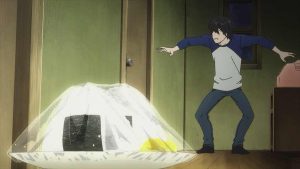 Cassettes weren’t as passé at the time this material was written as they are now, so I wonder if that dialogue between Setsu and Kai was added for effect. Even in cassette form that performance was, even to my untrained ear, phenomenal. It has to be, to provide a contrast to what Setsu will do later in the episode. This all gives a good sense of the trap Setsu is in. He idolizes his grandfather personally and musically, but the man’s genius is a trap from which Setsu must escape if he’s ever to become a true artist himself. This was covered quite brilliantly in Star Trek: The Next Generation with Data’s attempts to become a violinist. He could mimic any style from Heifetz to Perlman, but he fundamentally lacked the ability to create something that represented himself. And to be a true artist, that step is not optional.
Cassettes weren’t as passé at the time this material was written as they are now, so I wonder if that dialogue between Setsu and Kai was added for effect. Even in cassette form that performance was, even to my untrained ear, phenomenal. It has to be, to provide a contrast to what Setsu will do later in the episode. This all gives a good sense of the trap Setsu is in. He idolizes his grandfather personally and musically, but the man’s genius is a trap from which Setsu must escape if he’s ever to become a true artist himself. This was covered quite brilliantly in Star Trek: The Next Generation with Data’s attempts to become a violinist. He could mimic any style from Heifetz to Perlman, but he fundamentally lacked the ability to create something that represented himself. And to be a true artist, that step is not optional.
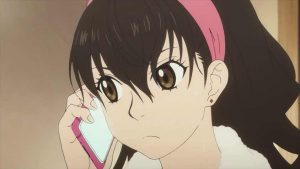 After a brief practice session at the shrine, which introduces us to Setsu’s neighbor Nagamori Rei (he’s the son of a rakugo performer, and this being Yanaka one supposes a lot of traditional artists live in the area) the focus turns to Setsu performing at the nursing home for Shuri’s grandmother. This was a bit of a minefield, to be honest. Not only was the performance itself a tightrope to get right, the potential for maudlin hokiness definitely existed here. But those mines are avoided – the old woman’s memories are handled with dignity and restraint, and Setsu’s Shungyou is both beautiful and recognizably incomplete. As Kai notes, Setsu has simplified Shungyou radically in order to be able to perform it, because it’s the only way he could perform it.
After a brief practice session at the shrine, which introduces us to Setsu’s neighbor Nagamori Rei (he’s the son of a rakugo performer, and this being Yanaka one supposes a lot of traditional artists live in the area) the focus turns to Setsu performing at the nursing home for Shuri’s grandmother. This was a bit of a minefield, to be honest. Not only was the performance itself a tightrope to get right, the potential for maudlin hokiness definitely existed here. But those mines are avoided – the old woman’s memories are handled with dignity and restraint, and Setsu’s Shungyou is both beautiful and recognizably incomplete. As Kai notes, Setsu has simplified Shungyou radically in order to be able to perform it, because it’s the only way he could perform it.
 In a way, the story of the blind young shamisen player wandering Japan during the war and going on to be a legend sounds like an even more interesting premise than the one we’re getting. But seeing it this way is still pretty darn great – fascinating and moving. Grandma doesn’t effusively praise Setsu – she notes that this was not what she heard in that storehouse when she was six years old. But like Kamiki she recongizes the soul of the performer through the performance, even if what he was performing belonged to someone else. The two connected, she saw what she longed to see, and both of them got a certain amount of closure and can move forward in their lives (albeit in very different stages of those lives).
In a way, the story of the blind young shamisen player wandering Japan during the war and going on to be a legend sounds like an even more interesting premise than the one we’re getting. But seeing it this way is still pretty darn great – fascinating and moving. Grandma doesn’t effusively praise Setsu – she notes that this was not what she heard in that storehouse when she was six years old. But like Kamiki she recongizes the soul of the performer through the performance, even if what he was performing belonged to someone else. The two connected, she saw what she longed to see, and both of them got a certain amount of closure and can move forward in their lives (albeit in very different stages of those lives).
 Would that the ep would have ended there – I’d have called it a classic. But Ume rears her beautiful and ugly head over the end credits, reminding us both how obnoxious she is and how she moves the story in contrived and silly directions. And that was just as I was forgetting how much I’ve come to dislike Yui, who responds to Kai’s perfectly on-point criticism of her by going violent on him. Stuff like this feels like it’s from a completely different show, and that such tropey and irritating characters and material can exist alongside near-transcendence is one of the peculiarities of Mashiro no Oto. I’ll take the bitter with the sweet, because the sweet here is such a memorable flavor, but I sure wish we didn’t have to.
Would that the ep would have ended there – I’d have called it a classic. But Ume rears her beautiful and ugly head over the end credits, reminding us both how obnoxious she is and how she moves the story in contrived and silly directions. And that was just as I was forgetting how much I’ve come to dislike Yui, who responds to Kai’s perfectly on-point criticism of her by going violent on him. Stuff like this feels like it’s from a completely different show, and that such tropey and irritating characters and material can exist alongside near-transcendence is one of the peculiarities of Mashiro no Oto. I’ll take the bitter with the sweet, because the sweet here is such a memorable flavor, but I sure wish we didn’t have to.


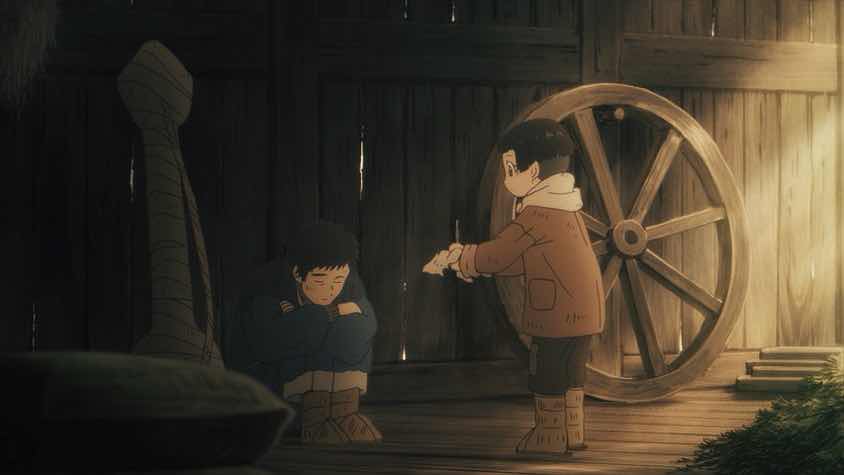
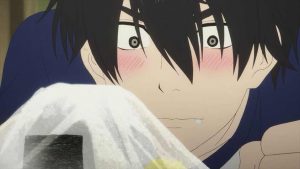

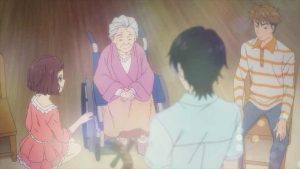
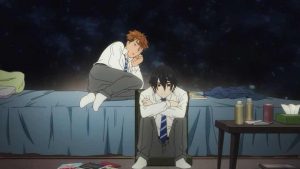

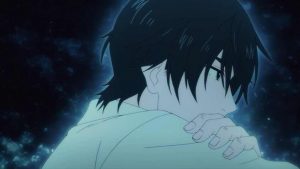
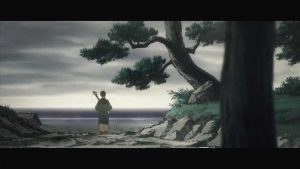
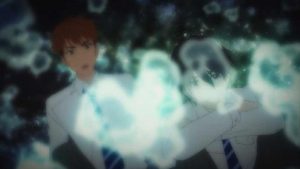



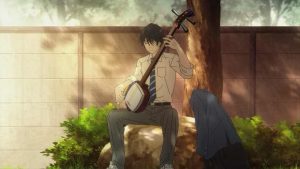

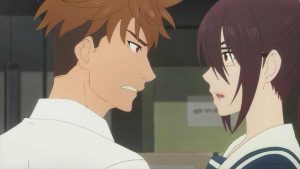

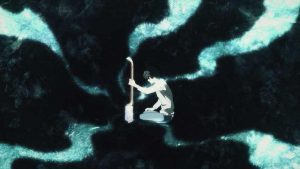
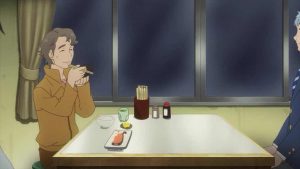

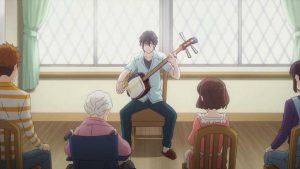
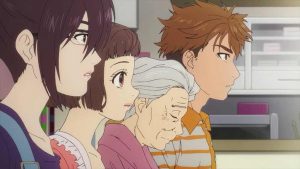
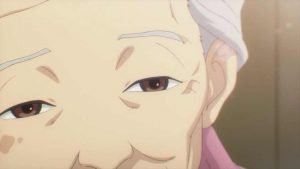
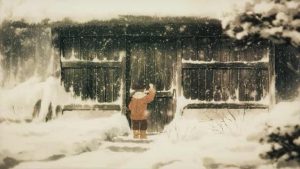
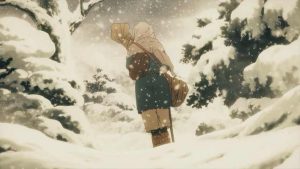
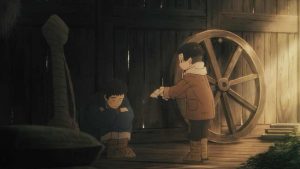


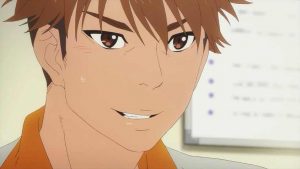
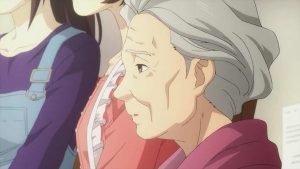

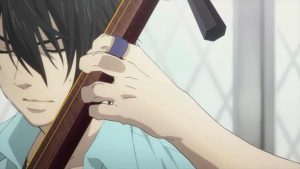
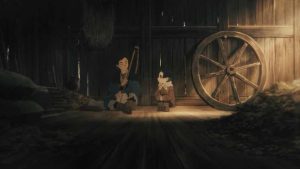
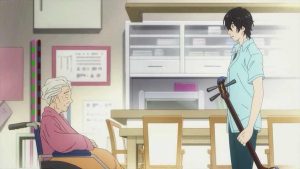
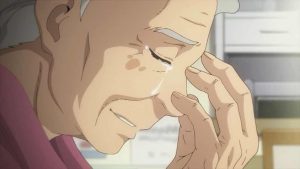
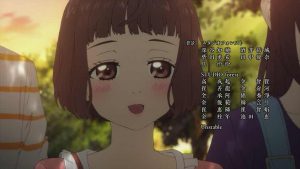

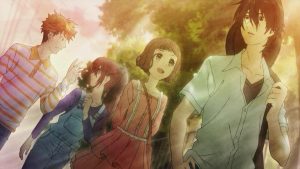
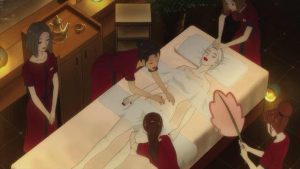
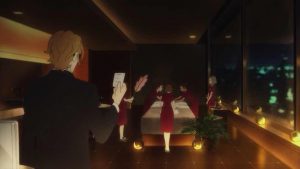
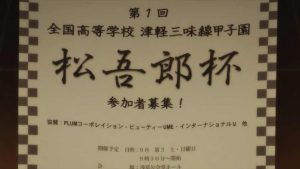
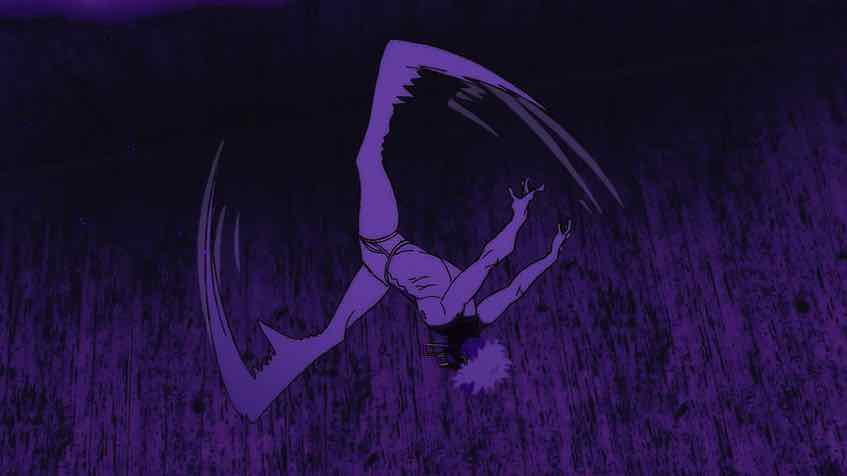
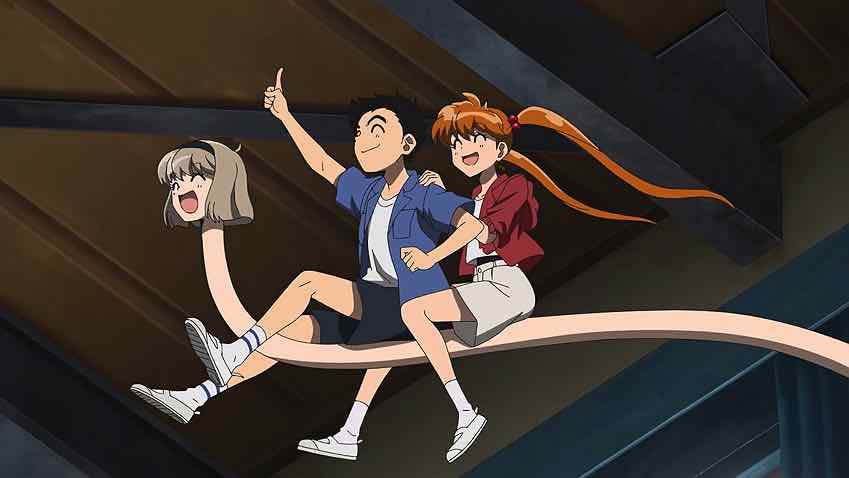
Chiku
April 24, 2021 at 8:19 pmThe way you talk about how this show reaches incredible highs when focusing on music and can be pretty infuriating at other points reminds me of your KimiUso posts, oddly enough. This show doesn’t seriously try to deal with parental abuse, however, and perhaps that’s what makes any slapstick comedy the protagonist receives more bearable to you.
Guardian Enzo
April 24, 2021 at 9:04 pmI get the comparison, but the difference is that with MnO it’s just being annoying. With Shigatsu it was (to me) downright abhorrent perspective that the series seemed to be coming from.
Snowball
April 24, 2021 at 9:06 pmSuch great works of wisdom from Wakana-chan.
Albion
April 25, 2021 at 5:49 amThe sad thing with this series is that all the females are terrible or a cliche… A pity, because the story is interesting and the music wonderful
Miyu Fan
April 25, 2021 at 7:30 amHonestly the female characters aren’t a dealbreaker yet for me in this series because the series still recognized them as awful characters, and as I’m hooked in already I think if we ever reached a point that somehow Setsu is grateful to Umeko I might just groan only. Like you said, this isn’t as awful as Shigatsu where the MC’s trauma was dismissed at every turn, just have some annoying characters.
I’m actually more surprised that Mashiro no Oto is not generating a big buzz in anime community, or at least in the circles I followed. The series has such a high-quality music scenes, great voice acting (I love Zakki and Hosoyan speaking with that Aomori dialect) and heartfelt feelings behind it, but no one is really talking about it. But then this season really got a lot of genuinely good series that most people just missed it. Spring 2021 kinda restores my hope that finally maybe the anime industry get their groove back and focused on adapting so many great manga instead those bland LNs.
Riv
April 26, 2021 at 11:17 amIt makes me long for Kono Oto Tomare’s supporting cast. But the musical scenes are superb.
Simone
April 27, 2021 at 5:51 amThe kick scene felt a bit out of place also because usually that sort of thing is left as a slapstick cartoony shenanigan, and instead here we got a perfectly realistic kick and aftereffect (that should have legitimately sent the dude to a hospital, most likely…), which was just weird for a throwaway moment. As for the mom, she does seem to be coming from a completely different and over the top show, but I’d probably watch that show too. It’s just odd to see them mixed together. By the way, this weird mish-mash to me shows also in the artstyle – some character designs simply don’t look like they belong in the same show.
Guardian Enzo
April 27, 2021 at 8:08 amInteresting. Who would you single out as looking like they don’t belong?
Simone
April 28, 2021 at 3:22 amThe mother certainly sticks out a bit in terms of colour scheme, if nothing else. In general the school characters looked to me a bit different? It was as if the cast in episode 1 and the cast introduced from episode 2 were designed in different ways. But it was just a surface feeling, so I wouldn’t say whether it holds up to scrutiny.